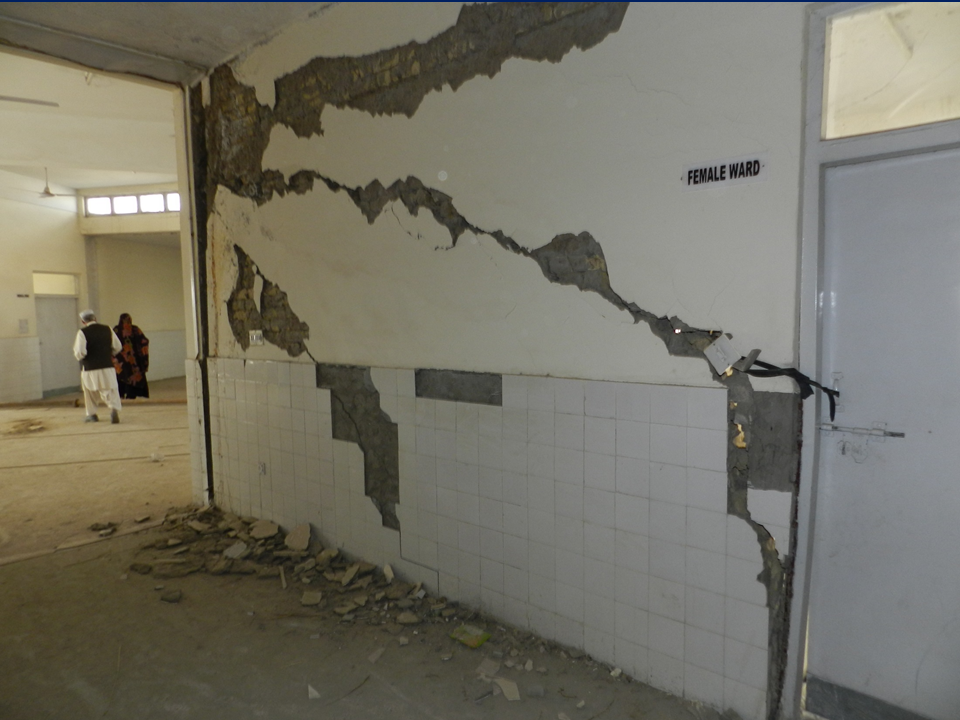Quetta: Population growth and over consumption of groundwater has led to decline in the water-table in Quetta, causing land subsidence and damage to buildings, roads and pipelines.
Dr. Din Mohammad Kakar, a professor at the Geology Department in the University of Balochistan, said groundwater has been pumped out at a rate far greater than it is being replenished, causing land subsidence.
Arid Balochistan gets little rainfall and has a long history of droughts.
Dr. Kakar told News Lens Pakistan that the water table has declined to about 300 feet in the last 40 years. Presently the water table, he said, is falling at the rate of 10-15 feet per year. With continued decline in the level of groundwater without adequate recharge, the soil sediments became increasingly compressed, causing the land to subside, he said.
“According to the Global Positioning System (GPS) data, the Quetta zone is subsiding at the rate of 10cm every year,” said Dr. Kakar. “The phenomenon of subsidence is irreversible. The buildings and land cannot be restored to its original level even if new dams are made and the water table rises back to its previous measure,” he claimed.

Quetta is the largest city and a Valley in the southern province of Balochistan, bordering Afghanistan. The province is arid and groundwater is the primary source of for domestic use and agricultural irrigation. With the declining groundwater level, says Dr. Kakar, additional wells are being drilled for agricultural use and farmers are pumping far deeper for groundwater.
According to a 2013 research study conducted by the University of Balochistan in collaboration with the University of Colorado, USA, and the University of Peshawar, the main driving force for subsidence is the increased population, creating a gap between water supply and demand. Deforestation on the mountains is also contributing to the decrease in rainfall and rise in temperature.
The research, “Land subsidence and declining water resources in Quetta Valley,” says mounting population growth and depleting groundwater supplies “are creating an alarming situation.”
Dr. Kakar, who worked on the study, says land subsidence has mainly occurred in north and south of regions of Quetta. Fissures have developed between the localities of Mia Ghundi to Baleli. The fissure in Killi Sofi near Baleli is the largest – more than one kilometer in length. Another fissure near Arbab Karam Road has a length of 100 meters and in the Killi Sariab, a 600 meters long fissure appeared developed in March 2015. According to Dr. Kakar, the fissure was spread across four streets of Killi Sariab.
“Groundwater is the only water source for domestic and agricultural use but it’s a suicide to use water for agriculture,” says Dr. Kakar. “We are in a situation where we have already exploited the water supply meant for the next generation water. To date, 70 per cent of groundwater is being used for agriculture in Quetta,” he added.
He said the government should ban agriculture in Quetta. “All landowners want is to get financial advantage at the cost of the valley and its people by drilling more and more tube wells to water crops.
Javaid Ahmed, the Chief Engineer at the Public Health Engineering Department (PHED), said subsidence in Quetta valley was not triggered solely by decline in water aquifers. He said the government was building new dams to solve the water issue.
He told Truth Tracker that agriculture could not be stopped in Quetta, “The government is considering advanced irrigation systems like trickle irrigation and others for agriculture.”
Damage, to the property and structures in the city, has caused alarm among people and real-estate developers, causing them not to invest in properties threatened by land subsidence. There are many damaged government and private buildings that need to be demolished, said Rizawan Ahmad, a civil engineer based in Quetta. Ahmad works on structural integrity of damaged buildings and homes in areas affected by land subsidence. The damaged buildings could threaten human lives if they collapse, he said.
“With land subsidence, cracks in building structure are appearing in various parts of the city,” said Ahmad, adding, “a large population lives and works in these building and houses. They can’t afford to relocate and the buildings they live in are too dangerous for them.”
Land subsidence has also had a negative impact on demand for residential property. The property rates in areas affected by subsidence are much lower than where it does not exist.
Asif Bangalzai, a property dealer at Sariab Road, said: “Subsidence has badly affected the Sariab area. People don’t take interest in buying houses and land here due to fear of danger.”
At the same time, those who could afford to move have left for safer places in the city.
Iqbal Smalani, a resident at Gahe Khan Chowk on Sariab Road said there were cracks in every home of his neighbourhood.
“We live in fear that our house could collapse anytime. Many people who had money and could afford to move to safe areas have left their damaged houses.”



